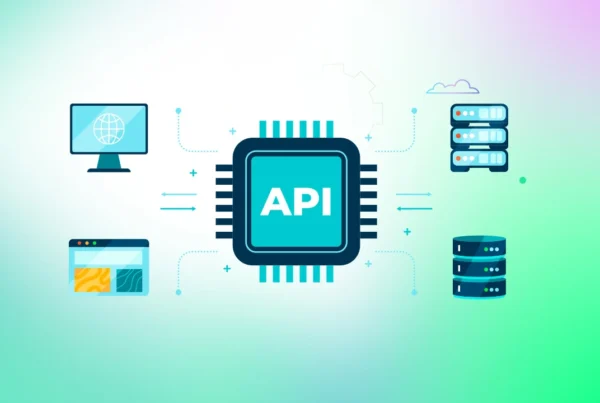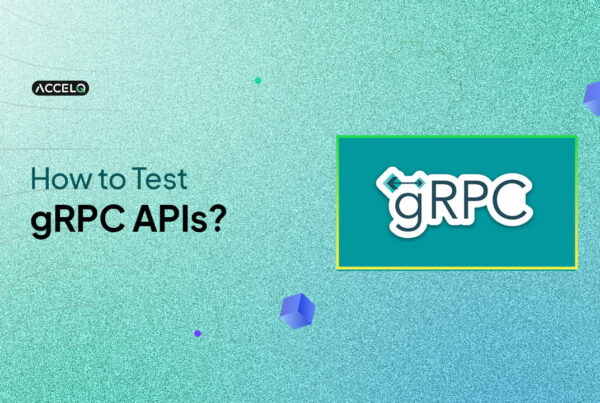How to test gRPC API?

gRPC is a cross-platform remote procedure call (RPC) framework that uses the HTTP transport protocol. It was developed by Google and is now managed by the Cloud Native Computing Foundation, it offers a particular RPC implementation. Before getting into how gRPC performs and how to test its APIs, let’s look at the contrast between gRPC and REST APIs.
gRPC API vs REST API: What’s the difference?
An API allows software components to communicate using defined protocols. gRPC and REST are two API design approaches. In gRPC, the client calls precise server functions, while REST enables clients to request or update data without direct function calls. But they have key differences, which are as follows:
| gRPC API | REST API |
|---|---|
| What is a gRPC API? A system to create and use APIs based on the Remote Procedure Call (RPC) client-server communication model. | What is a REST API? A set of rules that defines structured data exchange between a client and a server. |
| Protocol: Uses the HTTP/2 protocol. | Protocol: Uses HTTP/1.1 protocol. |
| Serialization: Protocol Buffers, a binary data serialization format, is used. | Serialization: JavaScript Object Notation (JSON), a text-based format, is used for data serialization. |
| Performance: gRPC API is rapid due to binary format and multiplexing. | Performance: The REST API is slow due to larger payloads and text parsing. |
| Ideal Use Case: In a microservice architecture, the gRPC API enables services to communicate smoothly. | Ideal Use Case: REST API is suitable for CRUD operations in web environments. |
SUGGESTED READ - Types of API
How does gRPC work?
gRPC is a schema-driven framework that uses Protocol Buffers (Protobuf) for data serialization and HTTP as its transport protocol. This combination ensures real-time communication with low latency. Here’s how gRPC operates:
Defining the service
The process starts with the communication contract definition. Next, developers create a .proto file using Protobuf, which is a language-neutral serialization framework. This file briefs the API structure. The file includes service methods and the message format used between the client and server. It defines the rules for request formatting, the expected data types, and the response format.
Code generation using protoc
After the .proto file is prepared, the Protobuf compiler, or protoc, compiles it to produce code for the client and the server. The produced code serves as a core to reduce manual work in service-to-service communication. The client-side code has methods that allow developers to call remote services.
On the server side, protoc produces base classes that developers can implement to define the service functionality. This automation not only speeds up development but also ensures consistency across languages and platforms.
Establishing communication
gRPC relies on HTTP as its transport protocol to support requests and responses sent over a one connection without waiting for each to finish. Like this way, it improves efficiency and reduces latency in real-time scenarios. In addition, HTTP offers built-in bidirectional streaming to permit the client and server to send data to each other in parallel.
Handling requests and responses
Once communication is established, the client and server interaction follows a straightforward pattern. On the client side, the developer uses the produced method to command a service method. The method handles the complexities of serializing the data into the format defined in the .proto file and sends it over the network. When the response arrives, the method deserializes it into a format that the application can understand. On the server side, the base class generated by protoc is implemented with custom logic to pick up the incoming request.
Boost Your API Testing: Learn how mocking and stubbing accelerate validation.
gRPC API testing: How to validate APIs?
Validating gRPC APIs differs from REST APIs as gRPC utilizes HTTP and Protobuf for communication. Testing ensures that the service contract works properly across languages and tools. Tools like ACCELQ, Postman, and BloomRPC aid QA teams in validating and automating gRPC testing workflows. The challenges in gRPC APIs testing are:
- gRPC API uses Protobuf for serialization, which makes it difficult to debug and inspect than text-based formats like JSON.
- The services of gRPC should work across programming languages, which complicates validation.
- Streaming support adds complexity to test client-server interactions for bidirectional streams.
- gRPC APIs rely on HTTP, which is not supported in all browsers. So, makes it hard to use gRPC instantly in web applications.
- There are fewer testing tools available compared to REST. ACCELQ and a few others help close this gap.
How to test gRPC APIs?
To test gRPC APIs, you validate request/response behavior, serialization, and service logic defined in the .proto contract. A simple workflow involves:
- Set up the gRPC client and upload the .proto file to produce the client stubs.
- Invoke the RPC method with test inputs to send valid and invalid payloads to the service.
- Validate response and status codes to check output fields, metadata, and gRPC status.
- Test missing fields, invalid authentication, timeouts, or incorrect request types.
- Automate gRPC testing in CI/CD to prevent contract regressions and maintain API reliability.
Example: Testing unauthorized access for a gRPC API method
import grpc
from user_service_pb2 import GetUserRequest
from user_service_pb2_grpc import UserServiceStub
channel = grpc.insecure_channel("localhost:50051")
stub = UserServiceStub(channel)
request = GetUserRequest(id=1)
try:
Stub.GetUser(request) # No auth token passed
assert False, "Expected UNAUTHENTICATED error"
except grpc.RpcError as e:
assert e.code() == grpc.StatusCode.UNAUTHENTICATED
print("Unauthorized access blocked:", e.code())
The API should return an UNAUTHENTICATED and blocked access, confirming that the method is protected.
Automating gRPC API testing
gRPC is an open-source framework that permits RPCs between distributed systems. It is generally used to create scalable and efficient APIs. Testing gRPC is important to ensure the performance and reliability of the APIs. ACCELQ offers no-code gRPC API automation, which enables test automation engineers to define, execute, and verify gRPC requests. Hence, automated gRPC tests help validate services at scale.
- Synthetic monitoring: Detecting a login slowdown at 2 a.m. before any customer notices, triggering an alert for the DevOps team.
- Traces: Identifying that checkout slowness isn’t the whole system, it’s the payment service timeout. Developers fix the right thing faster.
- Real-user journeys: Discovering a 20% drop-off in mobile checkout because images weren’t optimized.
But the scenarios don’t stop at e-commerce. Imagine a streaming platform where synthetic checks run nightly playback tests. Before customers complain about buffering, engineers already know which CDN node failed. Or picture an airline booking system: tracing shows exactly which microservice is delaying seat reservations, so fixes are immediate instead of firefighting blind.
These stories show why right-shift testing is becoming non-negotiable. It’s not just about catching bugs; it’s about protecting the end-to-end user experience, something ACCELQ emphasizes in its end-to-end automation approach.
Conclusion
You can effectively test your gRPC APIs by the steps outlined above. Using AI-enabled gRPC tools can help you optimize and speed up the testing process in addition to saving costs and labor. ACCELQ, our AI-driven automated testing platform, can be your reliable partner in setting up a comprehensive gRPC testing process. To know in detail, get a free demo.
Geosley Andrades
Director, Product Evangelist at ACCELQ
Geosley is a Test Automation Evangelist and Community builder at ACCELQ. Being passionate about continuous learning, Geosley helps ACCELQ with innovative solutions to transform test automation to be simpler, more reliable, and sustainable for the real world.
You Might Also Like:
 Understanding API Virtualization: A Beginner’s Guide
Understanding API Virtualization: A Beginner’s Guide
Understanding API Virtualization: A Beginner’s Guide
 Top API Testing Examples You Need To Try Today
Top API Testing Examples You Need To Try Today
Top API Testing Examples You Need To Try Today
 How to test gRPC API
How to test gRPC API




































